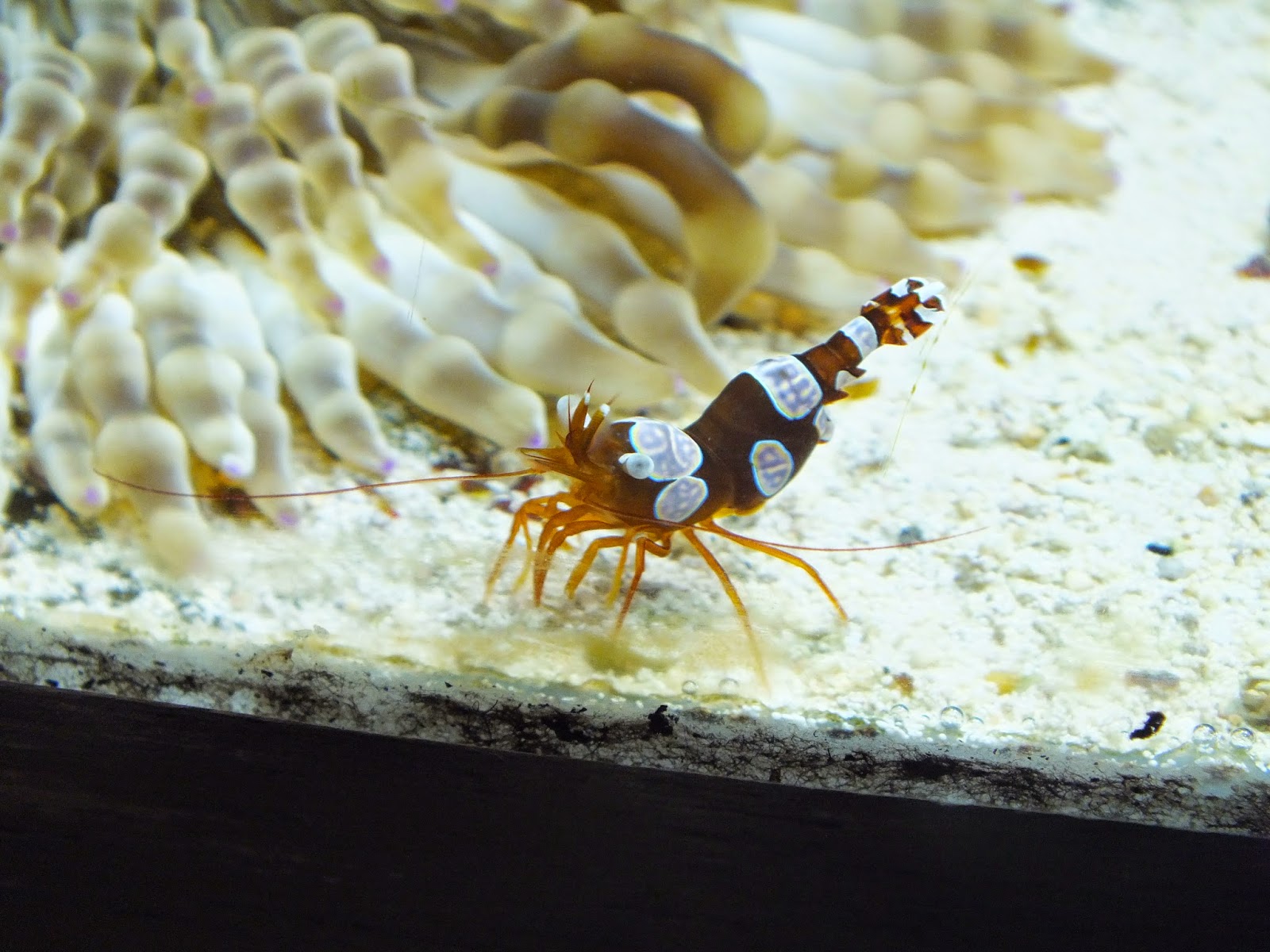Welcome back, here are some more photos taken at London Zoo last April.
Atlantic mudskipper
Periophthalmus barbarus (Linnaeus, 1766)
Gobiidae; Perciformes; Actinopterygii; Chordata
Made famous by that Guinness advert, which makes out we all came from mudskippers, which is obviously not true. Mudskippers are specialised gobies that live in tropical mangroves, where water level fluctuates throughout the day, often leaving these fish stranded on land. They can "skip" using their pectoral fins, swimming using the tail, and although they lack lungs, they can absorb oxygen through wet skin and mucous membranes (e.g. mouth).
Sexy shrimp
Thor amboinensis (de Mann, 1888)
Hippolytidae; Decapoda; Malacostraca; Arthropoda
Yes, this really is called the sexy shrimp. I really don't know why.
Grey-headed gull
Chroicocephalus cirrocephalus (Vieillot, 1818)
Laridae; Charadriiformes; Aves; Chordata
Closely related to the black-headed gull of Europe and the Bonaparte's gull of North America. This bird seems to be in transition between winter and summer plumage, as its head is still white.
Male green peafowl
Pavo muticus Linnaeus, 1766
Phasianidae; Galliformes; Aves; Chordata
This male was displaying to his females and a group of school children in the Snowden Aviary. Less well known but in my opinion much prettier than the blue peafowl.
Malagasy giant jumping rat
Hypogeomys antimena Grandidier, 1869
Nesomyidae; Rodentia; Mammalia; Chordata
Down in the basement of the Clore Pavilion, in an area formerly known as Moonlight World, can be found some of London Zoo's most unusual inhabitants. Over the years I have seen dasyures, echidnas, and other bizarre mammals in this part of the zoo, and today they still have a few species of nocturnal mammal to excite fans of obscure mammals. The Malagasy giant jumping rat is in a family endemic to Africa and Madagascar, with this species restricted to a tiny patch of forest in western Madagascar, and is classified as Endangered by the IUCN.
North Sri Lanka grey slender loris
Loris lydekkerianus nordicus (Osman Hill, 1933)
Lorisidae; Primates; Mammalia; Chordata
Another unusual inhabitant of the Moonlight World is the slender loris. I'm always wary of using flash photography on animals, especially those in darkened surroundings and with big eyes, but this loris was actually very curious, and came closer to me as I took no more than three photos before moving on.
Australian water rat
Hydromys chrysogaster Geoffroy, 1804
Muridae; Rodentia; Mammalia; Chordata
A large aquatic rodent native to Australia and New Guinea, it also goes by the names of beaver rat or rakali.
Moholi bushbaby
Galago moholi Smith, 1836
Galagidae; Primates; Mammalia; Chordata
A southern African primate named for the sound of its voice.
Hooded pitta
Pitta sordida (Muller, 1776)
Pittidae; Passeriformes; Aves; Chordata
Common emerald dove
Chalcophaps indica (Linnaeus, 1758)
Columbidae; Columbiformes; Aves; Chordata
Male black-necked weaver
Ploceus nigricollis (Vieillot, 1815)
Ploceidae; Passeriforms; Aves; Chordata
These three photos were taken in the Blackburn Pavilion, also known as the Bird House. It was rebuilt in 2008 to feature a walkthrough aviary.
Sumatran tiger cub
Panthera tigris sumatrae Pocock, 1929
Felidae; Carnivora; Mammalia; Chordata
This was taken when the tiger cubs at the zoo were only around a month old.,
Woolly-necked stork
Ciconia episcopus Boddaert, 1783
Ciconiidae; Ciconiiformes; Aves; Chordata
Taken at the African Bird Safari walkthrough.
Bearded pig
Sus barbatus Muller, 1838
Suidae; Artiodactyla; Mammalia; Chordata
A Southeast Asian relative of the wild boar, and a lot bigger than it looks!
Tawny frogmouth
Podargus strigoides (Latham, 1801)
Podargidae; Caprimulgiformes; Aves; Chordata
This nocturnal owl-like relative of nightjars is found in Australia, and looks very odd from the front.


















































